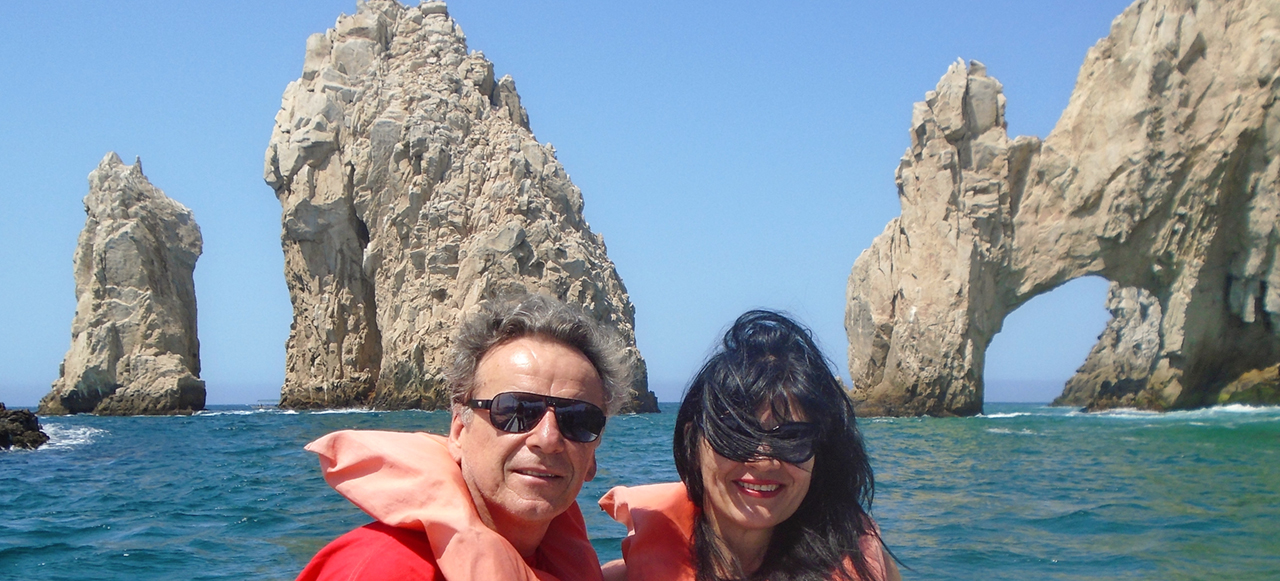

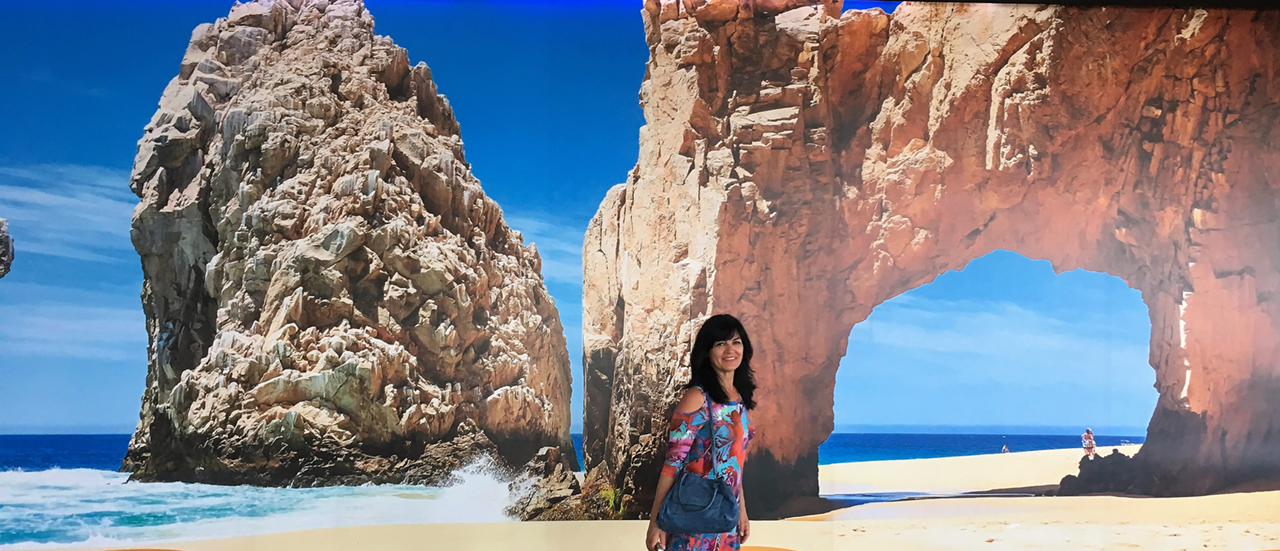
Our first advantageous vacation outside of USA was to Los Cabos. At that time we didn't know much about it, but glad we decided to take that trip. A 20-mile tourist corridor of gold sand beaches with crystal blue water where desert gently merged with the Sea of Cortez under blue skies, was just fascinating. At the first moment you would think that there could be no life there, but then touristic resorts showed up one by one along the long beach corridor. On the way back home, we were lucky to experience the flight panoramic beach view from our plane before we took a course back to Houston and it was a memory of a lifetime. This doesn't happen very often as it requires a special air traffic approval. We have taken thousands pictures during our Cabo vacations, but they are only pictures. The happiness is what we carry inside ourselves and that is why we love to re-vacation in Cabos whenever we have a chance.
A little bit about Cabos
Los Cabos is a municipality located at the southern tip of Mexico’s Baja California Peninsula, in the state of Baja California Sur. It encompasses the two towns of Cabo San Lucas and San José del Cabo (the municipal seat) linked by a thirty-two-km Resort Corridor of beach-front properties and championship golf courses. Several years ago, Cabo was just a fishing area where natives lived their lives connected to the nature sharing good and bad together. They’ve lived their lives probably not spending a lot of time on the beaches as they were their everyday scenery - nothing special about it: it’s just a beach. The area was remote and rural until the latter 20th century, when the Mexican government began to develop Cabo San Lucas for tourism, which then spread east to the municipal seat. The main draw is the climate and geography, where desert meets the sea, along with sport fishing, resorts and golf. This tourism is by far the main economic activity with over two million visitors per year. Over 1 million visit from the United States. There are many reasons why Los Cabos is a top destination for U.S travelers, but a couple of the most important are location and safety. Mexico and the United States sharing a border means generally short travel times to Los Cabos and plenty of opportunities.
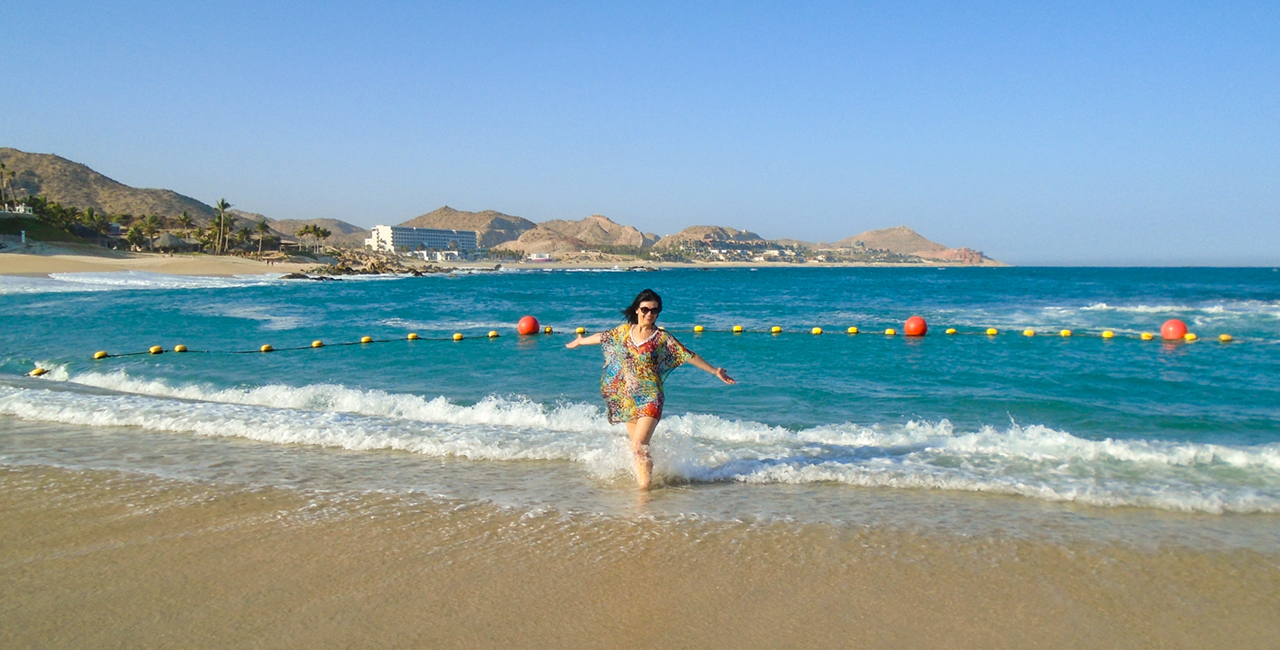
There are 19 blue flag beaches in Los Cabos. When a Blue Flag is flying, that means that a beach or marina is clean and accessible, has great water quality and meets high safety standards. No wonder Los Cabos ranks as the top destination in Mexico for visitors!
For this Cabos trip we stayed in the hotel Casa del Mar, located somewhat in between both Cabo San Lucas and San José Cabo. As we had a car rental, it was very convenience place. The hotel was really great and at the best price for us, but honestly, all hotels on the beach corridor are amazing. Perhaps, the location and a price may be a main difference. Driving from the airport to the hotel and around through this unusual landscape was really nice experience.
Cabo San Lucas
Cabo San Lucas, a resort city on the southern tip of Mexico’s Baja California peninsula, is known for its beaches, water-based activities and nightlife. Playa El Médano is Cabo’s main beach, with outdoor restaurants and numerous bars. Past the marina is Land’s End promontory, site of Playa del Amor (Lover’s Beach) and El Arco, a natural archway in the seacliffs.
The resorts that are already built and under construction are just a stunning and a breathtaking experience. There is no way to film them to cover everything, but here are some of them we captured around the area we stayed.
Over thousands of years, natural erosion shaped the arch in Cabo San Lucas into its iconic shape, and it marks the point where the Pacific Ocean meets the Sea of Cortez. One of the most interesting facts about Cabo San Lucas is that the meeting of these two bodies of water can create strong currents and big waves. The arch is locally known as “El Arco,” which means “the arch” in Spanish, or “Land’s End”.
Depending on the currents and the tide, every now and then, the waters lower, and the beach extends out under the arch. While this is a rare occurrence, the chance to walk under the arch is one of the top things to do in Cabo San Lucas if you get the opportunity.
Lover’s Beach is much calmer, where you can swim and snorkel, and Divorce beach is too dangerous to swim in with its turbulent water and rip currents. We found it interesting how they named the two connected beaches after relationships, one side calm and the other side turbulent.

The water taxi tour to the Arch of Cabo San Lucas...
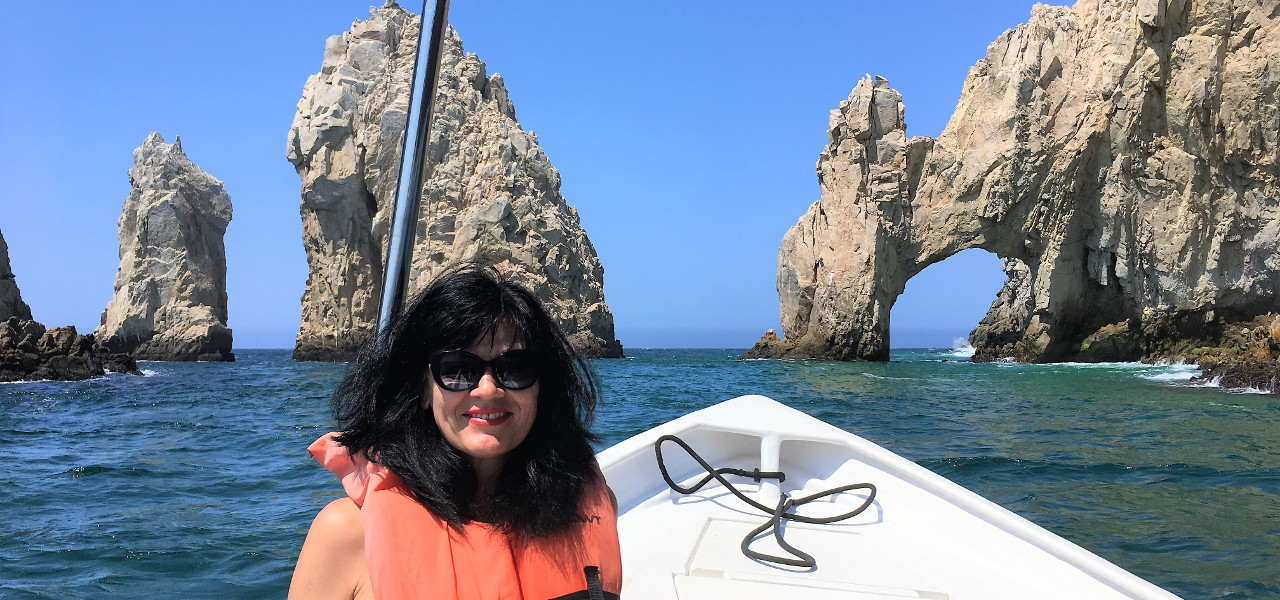
...and Playa del Amor (Lover’s beach)

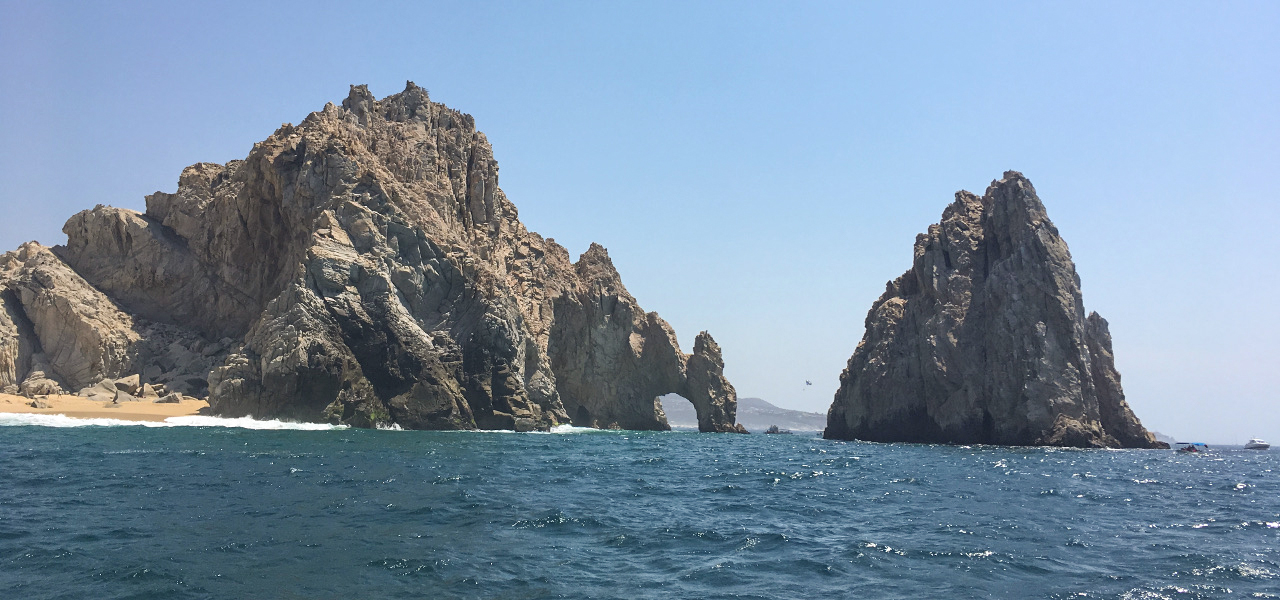
The history of Cabo San Lucas is a little bit different than other cities in Mexico. The most of building in Cabo San Lucas date to 20th century when it was transformed by international influence and the opulent preferences of its many distinguished visitors. . The landscape, local cuisine and sights create the ideal setting for romantic escapes, family vacations and celebratory getaways.

San José del Cabo
It’s known for its sandy beaches and colonial buildings. The San José missionary church, rebuilt in 1940, faces Plaza Mijares in the heart of the historic district. Nearby art galleries exhibit work by local artists. East of the city is San José Estuary, a nature reserve with bird species like hummingbirds, ibis and herons. We went there almost at night, therefore we couldn’t make nice daylight photos, so here is what we captured. Anyway, this city has that colonial Mexican charm and it is well worth of visiting.
As Cabo is mostly about beautiful gold sand beaches, let’s finish this story with a few more beach images!
That was all from Los Cabos. Thank you for watching!
